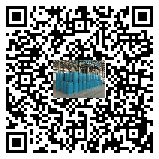Waterborne coating dispersants: key roles in the coatings industry
In the coatings industry, waterborne coatings have gradually become the mainstream of the market due
to their environmental protection and low volatile organic compound (VOC) emissions. However, waterborne
coatings face problems such as uneven dispersion, sedimentation, agglomeration and flocculation of pigments
and fillers during preparation and application. In order to overcome these challenges, waterborne coating
dispersants came into being. This article will provide you with relevant knowledge about waterborne coating
dispersants, including their definition, mechanism of action, types and applications.
1. Definition of waterborne coating dispersants
Waterborne coating dispersants refer to chemicals used to disperse and stabilize pigments or fillers in waterborne
coatings. They reduce the interaction between pigment and filler particles so that these particles can be evenly dispersed
in the coating system, thereby improving the performance and stability of the coating.
2. Mechanism of action
The mechanism of action of waterborne coating dispersants mainly includes the following aspects:
Electrostatic repulsion: The charged groups in the dispersant are adsorbed on the surface of the pigment particles,
giving the particles the same charge. When the particles approach, they repel each other due to electrostatic repulsion,
thereby achieving dispersion and stability of the particles.
Steric hindrance: Uncharged high molecular compounds (such as polymers) are adsorbed on the surface of pigment
particles to form a thick steric hindrance layer. This polymer film can prevent the particles from approaching and agglomerating
each other, thereby improving the stability of the coating.
Wetting and dispersion: Dispersants can also wet the surface of pigment particles, reduce their surface tension, and make the
particles easier to disperse in the coating.
3. Types
There are many types of water-based paint dispersants, which can be divided into the following categories according to their
chemical structure and mechanism of action:
Polyacrylates: This type of dispersant mainly stabilizes pigment particles through ionic action and suspends them in the water phase.
Common polymers such as sodium polyacrylate and ammonium polyacrylate are widely used in water-based coatings.
Non-ionic surfactants: Such as fatty alcohol polyoxyethylene ether sulfate (TES) dispersants, which can reduce surface tension and
promote the dispersion of pigments without affecting the stability of the coating.
Organic hydrophilic colloids: Including hydroxyethyl cellulose, polyethylene glycol, etc., this type of dispersant can be adsorbed on the
surface of the pigment to form an organic hydrophilic colloid layer, thereby promoting the dispersion of particles.
Acidic polymers: such as acrylic acid-methyl acrylate copolymer, maleic acid copolymer, etc. This type of dispersant can stabilize pigment
particles through mechanisms such as ion action and hydrolysis, and also has wetting and defoaming effects.
4. Applications
Waterborne coating dispersants are widely used in the coating industry. They can significantly improve the performance of coatings, such as:
Increasing pigment content: Dispersants can disperse higher pigment content, so that the coating has higher hiding power and tinting power.
Improving coating gloss: Dispersants can significantly improve the gloss of coatings by reducing the particle size of pigment particles and
improving their dispersion uniformity.
Improving coating stability: Dispersants can prevent the sedimentation, agglomeration and flocculation of pigment particles, thereby improving
the storage stability and construction performance of coatings.
Improving coating leveling: Dispersants can improve the leveling performance of coatings on substrates and reduce defects such as brush marks
and fish eyes.
5. Conclusion
As an important additive in the coating industry, waterborne coating dispersants play a key role in improving coating performance, stability and
construction performance. With increasingly stringent environmental regulations and consumers' increasing requirements for coating quality, the
application of waterborne coating dispersants will become more extensive. In the future, with the advancement of technology and changes in
market demand, the performance and application areas of waterborne coating dispersants will continue to expand and improve.


